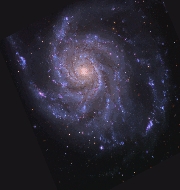Universe expanding faster than expected
Astronomers using NASA’s Hubble Space Telescope have discovered that the universe is expanding 5 percent to 9 percent faster than expected.
Discovery in this regard was made by an international team of researchers of the Space Telescope Science Institute and The Johns Hopkins University.
How it was discovered?
- Astronomers made this discovery by developing innovative techniques that helped to improve the precision of distance measurements to faraway galaxies.
- They looked for galaxies containing both Cepheid stars and Type Ia supernovae.
- They measured about 2,400 Cepheid stars in 19 galaxies and compared the observed brightness of both types of stars.
- It helped them to accurately calculate distances to roughly 300 Type Ia supernovae in far—flung galaxies.
- Finally, astronomers compared those distances with the expansion of space as measured by the stretching of light from receding galaxies.
Cepheid stars: These stars pulsate at rates that correspond to their true brightness. This can be compared with their apparent brightness as seen from Earth in order to accurately determine their distance.
Type Ia supernovae: It is another commonly used cosmic yardstick. They are exploding stars that flare with the same brightness and are brilliant enough to be seen from relatively longer distances.
Key findings
- Astronomers have made the most accurate measurements so far of the universe’s rate of expansion following the Big Bang 13.8 billion years ago.
- The universe is expanding 5 per cent to 9 per cent faster than expected and the finding may be explained by a mysterious force called dark radiation.
- It has prompted a rethink of our understanding of the universe and in particular, the concepts of dark matter and dark energy.
Month: Current Affairs - June, 2016


